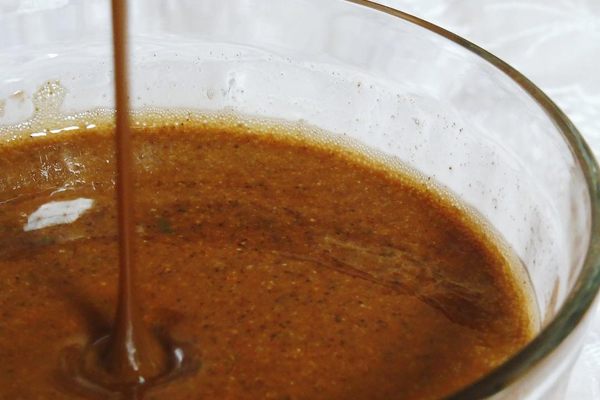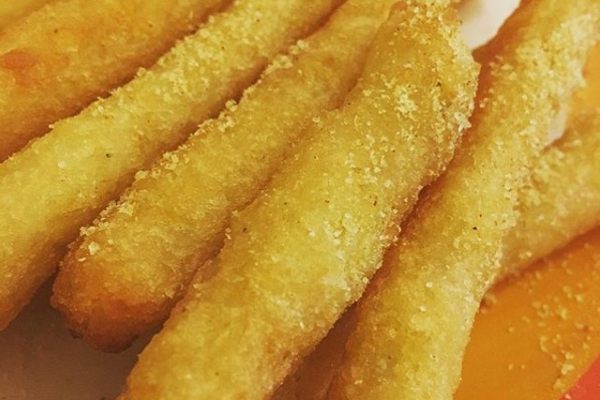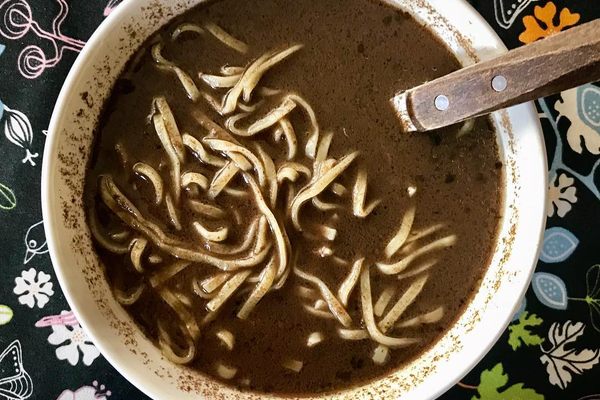All but the most committed of sushi chefs have given up on using true wasabi (Wasabia japonica), a semiaquatic herb native to the mountain streams of central Japan’s Nagano Prefecture. Most sushi fans are actually eating a mixture of ground horseradish, Chinese mustard, and green food coloring.
Fresh wasabi rhizomes—which are different from roots—prove extremely challenging to cultivate, but are consistently in-demand. Growers ask for more than $70 per pound, making wasabi one of the most lucrative, [legal] crops on Earth. Chefs who do endeavor to use the expensive, rare condiment must then contend with its rapidly diminishing effects. After using a sharkskin grater to give the accoutrement the texture of mashed potato, chefs immediately serve the finished product. Oxygen and moisture dissipate grated wasabi’s flavor in about 15 minutes.
The Japanese have grown wasabi for about a thousand years. Retiring shoguns even received plots of the prized crop as a gift, which their kin protected for centuries. Farmers continue to raise wasabi in tiered beds along Nagano’s streams, diverting water to create a continual, gentle wash over the rhizomes. Without this constant water stream, plants end up tasting muddy and bitter. Only after several years is the rhizome large enough to harvest. Wasabi won’t even germinate unless conditions are perfect. Outside the aromatic herb’s native, gravelly banks, farmers have found it exceedingly difficult to cultivate at all.
Why bother with the real stuff? Connoisseurs say that, unlike horseradish, the aromatic spice of actual wasabi enhances—but doesn’t overpower—the delicate taste of raw, fresh fish. The wasabi and horseradish plant are both members of the Brassicaceae family, which contain heat-packing chemicals called isothiocyanates (ITCs) that fill the nasal passage. While most of the heat in horseradish comes from an ITC known for its intense, radishlike pungency, wasabi contains a wide range of ITCs that have been described as “fresh, green, sweet, fatty, fragrant, and picklelike.”
Written By
 rachelrummel
rachelrummel
Sources
- www.huffingtonpost.com/entry/fake-wasabi-horseradish_us_561bd666e4b0082030a33959
- www.makesushi.com/real-wasabi-paste/
- firstwefeast.com/eat/2014/09/real-wasabi-is-one-of-the-most-expensive-crops-on-the-planet
- artofeating.com/true-wasabi-what-is-that-green-paste-really/
- www.tokyofoundation.org/en/topics/japanese-traditional-foods/vol.-18-wasabi
- www.jstor.org/stable/4255497
- www.microbiologyresearch.org/docserver/fulltext/micro/161/2/229_mic082362.pdf?expires=1536249696&id=id&accname=guest&checksum=5D9B0808630E4886BBF7848E16683033


















